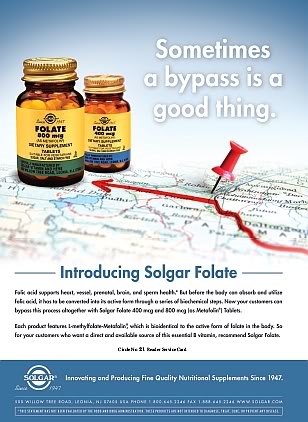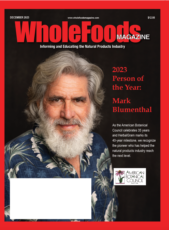As we understand more about gluten intolerance (not an allergy) and its related problems including gluten-sensitive enteropathy, celiac sprue, nontropical sprue, Gee-Herter’s disease and others, we can help more of the thousands of affected people achieve better health. There are many more gluten-free products available to help. The most important thing to keep in mind is that if the problem is not corrected as soon as possible, damage to the intestinal tract worsens, suffering increases, and the absorption of vital nutrients suffers, compounding all health problems!

Nutrigenomics suggests that several genetic polymorphisms occurred during the time that mankind shifted from our ancestral diet to agriculture. Yes, the diet itself changed in nutrient content including factors such as antioxidant content (ORAC score), glycemic index and ratio of omega-3 to omega-6 fats, but several genetic single nucleotide polymorphisms (SNPs) developed as man struggled to adapt to the widespread use of grains.
Mankind learned to mill (grind) grains into flour for convenient cooking and to breakup the indigestible grains so that their surface area is increased sufficiently for digestion. A distinct advantage to wheat, rye and barley grains is their high content of gluten. Gluten is actually a composite of the proteins gliadin and glutenin. However, not all persons adapted well to the main grain protein gluten. When flour dough is kneaded, glutenin molecules in gluten cross-link to form a submicroscopic network that gives the dough an elastic structure. This also provides a microscopic net to retain carbon dioxide gas bubbles rising from yeast fermentation resulting in an aerated foodstuff with a soft texture, desirable for breads, cakes and the like.
Richard a. passwater, ph.d.Today, we are hearing more and more about the problems some people unknowingly have with gluten. Neither they, nor most physicians, suspect the multiple organ problems (including gastrointestinal tract, skin, neurological system and muscles) to be related to food, let alone to gluten in the food. It is estimated that about 1% of the U.S. population and much more in European populations (especially Irish) suffer from Celiac disease itself, but that may be only the tip of the gluten-sensitivity iceberg.
As we understand more about gluten intolerance (not an allergy) and its related problems including gluten-sensitive enteropathy, celiac sprue, nontropical sprue, Gee-Herter’s disease and others, we can help more of the thousands of affected people achieve better health. There are many more gluten-free products available to help. The most important thing to keep in mind is that if the problem is not corrected as soon as possible, damage to the intestinal tract worsens, suffering increases, and the absorption of vital nutrients suffers, compounding all health problems!
To help us address this problem, I am once again turning to my longtime friend and colleague, Shari Lieberman, Ph.D. We have chatted with her before in this column about restoring mental function with phosphatidylserine (www.drpasswater.com/nutrition_library/Leci-PS.html).
Dr. Shari Lieberman earned her Ph.D. in clinical nutrition and exercise physiology from The Union Institute, Cincinnati, OH and her M.S. degree in nutrition, food science and dietetics from New York University. She is a certified nutrition specialist (C.N.S.); a fellow of the American College of Nutrition (FACN); a member of the American Academy of Anti-Aging Medicine (A4M); a former officer, present board member and chair of the exam committee for the Certification Board for Nutrition Specialists; and past-president of the American Association for Health Freedom.
She is the recipient of the National Nutritional Foods Association 2003 Clinician of the Year Award and is in the Cambridge Who’s Who Registry of Executives and Professionals. She is the author of The Gluten Connection (Rodale 2007) and The Glycemic Index Food Guide (Square 1 Publishers 2006). Dr. Lieberman’s best-selling book The Real Vitamin & Mineral Book is in its fourth edition (Avery/Penguin Putnam 2007). She is the author of The Mineral Miracle (Square 1 Publishers 2006); User’s Guide To Brain-Boosting Supplements (Basic Health Publications, Inc. 2004); Dare To Lose: 4 Simple Steps to a Better Body (Avery/Penguin Putnam 2003); Get Off the Menopause Roller Coaster (Avery/Penguin Putnam 2002); Maitake Mushroom and D-fraction (Woodland Publishing 2001; Maitake King of Mushrooms (Keats Publishing 1997) and All About Vitamin C (Avery Publishing Group 1999). Dr. Lieberman is the Founding Dean of New York Chiropractic College’s MS Degree in Clinical Nutrition; an industry consultant; a contributing editor to the American Medical Association’s fifth edition of Drug Evaluations; a peer reviewer for scientific publications; a published scientific researcher and a presenter at numerous scientific conferences. Dr. Lieberman is a frequent guest on television and radio and her name is often seen in magazines as an authority on nutrition. She has been in private practice as a nutrition scientist for more than 20 years.
 Passwater: What aroused your interest in a career in nutrition?
Passwater: What aroused your interest in a career in nutrition?
Lieberman: I always wanted to be a physician—ever since I was a child. When I was 12 years old, I contracted mononucleosis in the summer and was told I would not be able to play any sports. That was not going to happen! My father was an avid follower of Adelle Davis, Dr. Carlton Fredericks and another man you may know—Dr. Richard Passwater. He gave me 50,000 IU of vitamin A every day along with 10,000 mg of vitamin C. Two weeks later I returned to the doctor and he repeated my blood work. He couldn’t believe what he saw. Everything had returned to normal and I was out playing sports again. I was supposed to be on bed rest for three months. My family always used dietary supplements first for prevention and treatment of any illness. That’s how I was raised. This piqued my interest in the field of nutrition. I was pre-med in college and then changed my major to nutrition. It has been nutrition ever since with a B.S., M.S. and Ph.D. in nutrition science.
Passwater: Why do you prefer clinical nutrition to university laboratory nutrition?
Lieberman: I almost went to Columbia College of Physicians and Surgeons for my Ph.D. It would have entailed hours in a lab experimenting on animals. Not my idea of a relevant career. That’s not to say that this research is not important, but the vast majority of dietary supplements have a safety profile that exceeds aspirin and acetaminophen (Tylenol) by 2,000 fold, so I feel completely comfortable and confident about the public learning how to use dietary supplements most effectively for prevention, treatment and mitigation of disease (all the things you can’t put on the label!). And, there has been so much human research in the field of nutrition I feel my time is best spent educating physicians and other health professionals on the use of dietary supplements in clinical practice as well as educating consumers and patients how they can improve their health using them as well.
Passwater: What aroused your interest in gluten and why did you feel it was important enough to write a book about it?
Lieberman: About 20–25 years ago, yeast was all the rage. So, many patients I was seeing were diagnosed with “systemic yeast” and were on drugs such as nystatin for at least one year. But, they weren’t much better than when they started. I happened to come across some very interesting literature on gluten and learned that it can have profound adverse effects on immune function. I also had a different philosophy probably because I was also seeing so many HIV-positive patients who also had severe yeast infections. Everyone has yeast. In my personal clinical experience, yeast is usually not the cause of an illness, but rather a consequence of an illness. An illness suppresses immune function, which, in turn, may result in an overgrowth of yeast. But, everyone has it—the issue is when it runs amok.
 Passwater: OK, let’s get to the basics. What is gluten?
Passwater: OK, let’s get to the basics. What is gluten?
Lieberman: Gluten is a protein that is found in wheat, rye and barley. It is what gives certain baking characteristics to bread products.
Is it in any other foods? Yes. You must read labels because it can even be in ice cream, soups, soy sauce, teriyaki sauce, prepared foods, imitation crab and beer—just to name a few. Even hydrolyzed vegetable protein contains gluten. You also need to know other forms of wheat that also contain gluten such as graham, triticale, durum, semolina, spelt, kamut and bulgur.
Passwater: What is the problem with gluten? What is “gluten sensitivity”?
Lieberman: Gluten sensitivity is not a food allergy, but a food “intolerance.” Allergies and intolerances are both reactions by the immune system, but those reactions are completely different. Gluten sensitivity is a food immune reactivity. It is much more complicated than allergic reactions.
Passwater: Do you remember the first time you used a gluten-free diet with a patient?
Lieberman: Yes. A 14-year-old young lady was brought to my office (20 years ago) with severe Crohn’s disease and had already scheduled surgery the following month to have her terminal ileum removed. I put her on a gluten- and dairy-free diet and low and behold, all diarrhea and bleeding stopped. And, her physician was able to wean her off her medication. She is still fine today.
Passwater: What other types of illnesses respond to a gluten-free diet?
Lieberman: Just about anything that is chronic. I have successfully used gluten-free diets for disorders such as ADHD, fibromyalgia, lupus, migraines, multiple sclerosis, rheumatoid arthritis, ulcerative colitis, microscopic colitis, psoriasis and even type 1 diabetes. The list goes on and on. I have even used it successfully for weight loss when everything else failed. If you have an illness that is not responding to medical intervention you have absolutely nothing to lose. Wheat, rye and barley may be the culprits. And, you can get far better sources of nutrients from other sources. There is absolutely no harm in giving a gluten-free diet a try—even with a child. I saw a dramatic case of Darier’s disease that completely cleared with a gluten-free diet. I didn’t even know what this disease was. I called one of my physician colleagues and I researched it. You are basically born with this disorder and it usually manifests by the time you are a teenager. Imagine the worst case of psoriasis from head to toe. This man never wore shorts, tee shirts or bathing suits until he went gluten free. This is an autoimmune genetic disorder that completely cleared on the diet. He stayed on it for the rest of his life and his skin remained clear. None of the medical treatments (some quite toxic) he received had worked.
Passwater: Is a gluten-free diet difficult to follow?
Lieberman: Twenty years ago—yes. Now—no. There are so many gluten-free products to choose from and health food stores with dedicated gluten-free bakeries—it so much easier now. My book is filled with resources to make this really easy. And most important, the gluten-free food tastes great and you can’t tell the difference. Many health food stores have gluten-free sections and will give a gluten-free tour of the store.
Passwater: What is the connection between casein and gluten? What exactly are they?
Lieberman: There appears to be a cross-reactivity to gluten and casein. Gluten is the predominant protein found in wheat, rye and barley. Casein is one of the proteins found in milk. The other protein is whey. Many people who are sensitive to gluten may also be sensitive to casein (and vice versa). So for some folks, it may be better to truly avoid both. This cross-reactivity appears to be well documented in autism. The Autism Research Institute surveyed 1,000 parents of autistic children and asked them what had the most dramatic impact on your child’s behavior? Drugs rated quite low around 15%, dietary supplements were better around 30–35%. Sixty-five percent of parents answered that a gluten-free, dairy-free diet had the most dramatic impact on their behavior and many of the children “woke up.” Many of my colleagues, some of whom were interviewed for the book, use gluten- and dairy-free (casein free) diets with autistic children and have had excellent results.
Passwater: Are folks with gluten sensitivity experiencing an allergy?
Lieberman: No. An allergy is more of an immediate reaction. For example, you eat strawberries and you get a rash after eating them. You eat seafood and during or after the meal your tongue swells. The worst case is if you eat peanuts and you go into anaphylactic shock and require epinephrine immediately or your airway completely closes. Gluten causes an immune reactivity. You may not have a reaction for 24–48 hours after consuming it. So, you may think the meal you just consumed was the cause when in fact it was the gluten you consumed two days ago. And, it is a very complicated immune reaction that may affect people in different ways. Someone may have intestinal/bowel issues, while another may have behavioral issues and yet someone else may have skin issues. There are even studies showing that some individuals diagnosed with schizophrenia may recover with a gluten-free diet and it can also have a dramatic impact on neurological disease such as Parkinson’s and ataxia. The results can be that dramatic. There are so many illnesses that can respond to a gluten-free diet it is quite surprising. And, there is no downside to trying it.
Passwater: I have heard patients exclaim that they were so surprised and disappointed that their condition wasn’t diagnosed by their physicians. Why are so many physicians and health professionals not aware of the gluten connection?
Lieberman: It’s because of what we all learned in school. Gluten, celiac disease, period. End of conversation. We now know from the scientific literature that celiac disease is only one manifestation of a gluten sensitivity; it is not the only manifestation of a gluten sensitivity. Health professionals need to be educated about gluten sensitivity because it can make a profound difference in patient outcomes. Often, what we learn in school becomes outdated by the time we graduate. It is up to us to keep up with the science.
Physicians and other health professionals need to be aware of the gluten connection to disease. But I also feel that the general public needs to know so that they can take charge of their health and well-being and not have to wait until they see the “right person” to tell them to eat gluten free. There is absolutely no downside to doing this. You have absolutely nothing to lose.
Passwater: Is there a blood test that can help?
Lieberman: This is the biggest problem. Gluten (also known as gliadin) is a very big molecule that will not pass through your intestines into your blood stream unless all of your intestinal villi are flattened and destroyed. The villi are hair-like structures on your intestinal wall that increases the absorptive area so you can absorb more nutrients from your food. So, unless you have full-blown celiac disease with completely destroyed intestinal villi, it is highly unlikely that gluten will be able to get into your bloodstream so you can make antibodies to it that can be detected by a blood test. Even with full-blown celiac disease, blood tests miss the diagnosis about 30% of the time! There are also more than 30 gliadin peptides that are not even evaluated by the blood test. Celiac disease must also be confirmed by an intestinal biopsy. However, if the intestinal villi are not completely flattened and destroyed, you will not be diagnosed with celiac disease. This still holds true even if the biopsy showed inflammation and other abnormalities! Celiac disease and gluten sensitivity does not happen overnight. It is rather sad that even in the case of celiac disease, it is missed simply because someone is not sick enough.
Passwater: When you lecture about gluten sensitivity to physicians, what has been their response?
Lieberman: Amazing. Not only do physicians approach me after the talk, but they also e-mail and call me to tell me that they tried eating gluten-free themselves and what a dramatic difference it made in their lives. I always educate them to try the diet first before recommending it to a patient. It will enhance compliance and they can also share their own experience. What is also amazing is that some of the folks from the audio visual crew have approached me to tell me that they were sure that gluten is the cause of their illness—several of them were diagnosed with Crohn’s disease or ulcerative colitis and others had family members with autoimmune disease and were excited to share the book and information with their loved ones.
Passwater: Approximately how many folks are affected by gluten sensitivity?
Lieberman: The numbers are quite staggering. If we simply look at the statistics on celiac disease, those numbers have risen dramatically. It is now estimated that one out of 133 people have celiac disease. And, the fastest-rising population being diagnosed with celiac disease is women over 40 years of age. But, the gluten issue as a whole may be affecting large numbers of our population. Some researchers estimate that as many as 29% of people are gluten sensitive. And, approximately 81% of Americans have a genetic disposition toward gluten sensitivity. Now, you can start to understand why it is so important to give a gluten-free diet a try with any chronic disease.
Passwater: Why do you think that the numbers have increased so dramatically for both celiac disease and gluten sensitivity?
Lieberman: There are a few reasons. We are exposed to much greater amounts of gluten than we are genetically engineered to handle. We have increased the gluten content of flour by as much as 90% to impart a specific baking characteristic to bread of being crunchy on the outside and chewy on the inside. If you look at just about anyone’s diet, they are eating gluten for breakfast, lunch, dinner and snacks. We are consuming enormous amounts of wheat in our daily lives. And we are paying the price for doing so. This is one of the reasons I am so against genetic modification of foods. No one asks the right questions or makes sure that there are any safeguards to protect us from any potential harm caused by these foods. The amount of gluten was increased in flour without any thought of the possible consequences. And sometimes, we can’t even imagine what could happen. That’s also why if genetically modified foods are not labeled as such, how will we ever know the consequences until large segments of the population are affected? Americans have a right to know if their food is being tampered with in any way so that if any harm is being done it can be traced back to that food. Unfortunately, that is not the case. Most Americans don’t even realize that if they buy non-organic milk it can have as many as 80 antibiotic residues. Imagine if that was put on the label! Your average American doesn’t know that there is really a difference. Education is the key.
Passwater: Can gluten sensitivity play a role in weight management? I have heard of so many reports of people unexpectedly losing weight after switching to a gluten-free diet.
Lieberman: Absolutely. Remember that the consequence of a gluten sensitivity varies from person to person. A gluten sensitivity can affect thyroid function enough to cause weight gain and not enough to be a clinical medical issue. Gluten can also cause inflammation. It can affect any cell, tissue or organ. I have seen dramatic results in people who failed just about every diet, weight-loss supplement and drug with a gluten-free diet. If gluten is the culprit, you lose weight rather quickly in the first two weeks that you go off it. You may lose as much as five to 10 pounds (sometimes more) within these first two weeks. Afterwards, you will still lose weight but at a more reasonable level over time.
Passwater: Dr. Lieberman, thank you for sharing this information with our readers. They may find much more information in your book, The Gluten Connection: How Gluten Sensitivity May Be Sabotaging Your Health—And What You Can Do to Take Control NOW (Rodale 2007). This is a how to-book that gives the details needed to regain optimal health for those having gluten sensitivity. The role of diet, cooking and dietary supplements is thoroughly discussed. WF
Dr. Richard Passwater is the author of more than 40 books and 500 articles on nutrition. He is the vice president of research and development for Solgar, Inc. Dr. Passwater has been WholeFoods Magazine’s science editor and author of this column since 1984. More information is available on his Web site, www.drpasswater.com.
Published in WholeFoods Magazine, January 2009










